Themed collection Silicon Chemistry: Discoveries and Advances

Current advances in the chemistry of silicon: not exactly a carbon copy
Welcome to this themed issue of Dalton Transactions entitled: ‘Silicon Chemistry: Discoveries and Advances.’

Dalton Trans., 2017,46, 8699-8700
https://doi.org/10.1039/C7DT90112G
Functionalized vinylsilanes via highly efficient and recyclable Pt-nanoparticle catalysed hydrosilylation of alkynes
A mild, selective and facile synthesis of vinylsilanes via a recyclable platinum nanoparticle catalysed hydrosilylation of alkynes is reported.
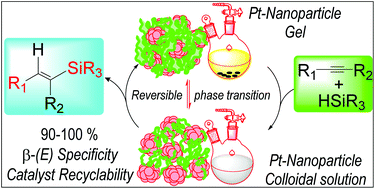
Dalton Trans., 2017,46, 8709-8715
https://doi.org/10.1039/C7DT00544J
Synthesis and structures of lithium alkoxytris(dimethylphenylsilyl)borates
The X-ray crystallography showed that the structures of the silyl-substituted borates are affected by the alkoxy groups.

Dalton Trans., 2017,46, 8705-8708
https://doi.org/10.1039/C7DT00395A
Hydrogen-bridged bis(silylene) complexes of ruthenium and iron: synthesis, structures and multi-centre bonding interactions at the M–Si–H–Si four-membered ring
Ruthenium and iron complexes featuring a MSi2H four-centre bonding interaction were synthesized and the interaction was evaluated experimentally and theoretically.
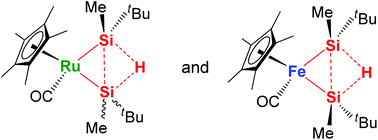
Dalton Trans., 2017,46, 8701-8704
https://doi.org/10.1039/C7DT00505A
A Pt(0) complex with cyclic (alkyl)(amino)silylene and 1,3-divinyl-1,1,3,3-tetramethyldisiloxane ligands: synthesis, molecular structure, and catalytic hydrosilylation activity
A platinum(0) complex bearing a cyclic (alkyl)(amino)silylene and a 1,3-divinyl-1,1,3,3-tetramethyldisiloxane (DVTMS) was synthesized and isolated in the form of colorless crystals.
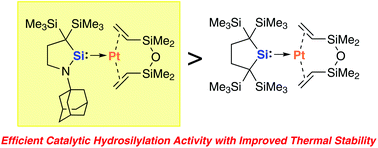
Dalton Trans., 2017,46, 8868-8874
https://doi.org/10.1039/C7DT01113J
Reactivity studies of silylene [PhC(NtBu)2](C5Me5)Si – reactions with [M(COD)Cl]2 (M = Rh(I), Ir(I)), S, Se, Te, and BH3
The reactivity of N-heterocyclic silylene [PhC(NtBu)2](C5Me5)Si towards main group elements and transition metals was evaluated.
Si – reactions with [M(COD)Cl]2 (M = Rh(i), Ir(i)), S, Se, Te, and BH3](/en/Image/Get?imageInfo.ImageType=GA&imageInfo.ImageIdentifier.ManuscriptID=C7DT00483D&imageInfo.ImageIdentifier.Year=2017)
Dalton Trans., 2017,46, 8861-8867
https://doi.org/10.1039/C7DT00483D
Molecular structures of various alkyldichlorosilanes in the solid state
A series of organodichlorosilanes RR′SiCl2 (R,R′ = (CH2)3; (CH2)4; (CH2)5; Me,Me; Me,H; Me,Cl) was studied by single-crystal X-ray diffraction analyses.
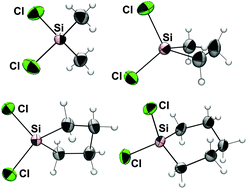
Dalton Trans., 2017,46, 8875-8882
https://doi.org/10.1039/C7DT00300E
Monolithic porous magnesium silicide
Macroporous magnesium silicide monoliths were prepared by a two-step magnesiothermic reaction starting from hierarchically structured silica with silicon as an intermediate step.

Dalton Trans., 2017,46, 8855-8860
https://doi.org/10.1039/C7DT00571G
A family of rhodium and iridium complexes with semirigid benzylsilyl phosphines: from bidentate to tetradentate coordination modes
Rh and Ir coordination of phosphines with 1 to 3 Si–H groups.
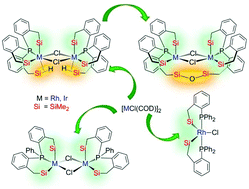
Dalton Trans., 2017,46, 8827-8838
https://doi.org/10.1039/C7DT00727B
Radical cations of phenyl silatrane
Electrochemical oxidation of phenyl silatrane provides persistent radical cations with an unpaired electron mostly localized on the atrane nitrogen.
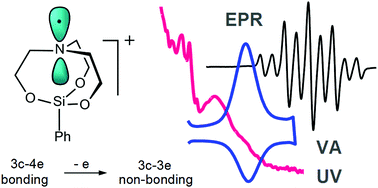
Dalton Trans., 2017,46, 8849-8854
https://doi.org/10.1039/C7DT00447H
(Oligo)aromatic species with one or two conjugated Si![[double bond, length as m-dash]](https://www.rsc.org/images/entities/char_e001.gif) Si bonds: near-IR emission of anthracenyl-bridged tetrasiladiene
Si bonds: near-IR emission of anthracenyl-bridged tetrasiladiene
Si![[double bond, length as m-dash]](https://www.rsc.org/images/entities/char_e001.gif) Si transfer to bulky (poly)aromatic substrates is described. Some products show intermolecular charge transfer bands and weak fluorescence.
Si transfer to bulky (poly)aromatic substrates is described. Some products show intermolecular charge transfer bands and weak fluorescence.
![Graphical abstract: (Oligo)aromatic species with one or two conjugated Si [[double bond, length as m-dash]] Si bonds: near-IR emission of anthracenyl-bridged tetrasiladiene](/en/Image/Get?imageInfo.ImageType=GA&imageInfo.ImageIdentifier.ManuscriptID=C7DT00397H&imageInfo.ImageIdentifier.Year=2017)
Dalton Trans., 2017,46, 8839-8848
https://doi.org/10.1039/C7DT00397H
Borane-catalysed postpolymerisation modification of the Si–H bonds in poly(phenylsilane)
An unusually wide variety of new sidechains are introduced at a polysilane through chemoselective catalytic hydrosilation, heterodehydrocoupling, and demethanative coupling.
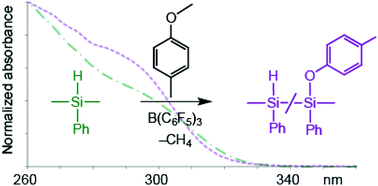
Dalton Trans., 2017,46, 8818-8826
https://doi.org/10.1039/C7DT00546F
Flexible organofunctional aerogels
Flexible inorganic–organic silica aerogels based on methyltrimethoxysilane (MTMS, CH3Si(OCH3)3) can overcome the drawbacks of conventional silica aerogels by introducing high mechanical strength, elastic recovery and hydrophobicity to monolithic materials.

Dalton Trans., 2017,46, 8809-8817
https://doi.org/10.1039/C7DT00558J
The thrombogenic activity of POSS silanols
In vitro studies into the interaction of polyhedral oligomeric silsesquioxane (POSS) trisilanols with porcine and human red blood cells (erythrocytes), and mouse fibroblasts with is reported.

Dalton Trans., 2017,46, 8788-8796
https://doi.org/10.1039/C7DT00487G
[PhSiO1.5]8,10,12 as nanoreactors for non-enzymatic introduction of ortho, meta or para-hydroxyl groups to aromatic molecules
Traditional electrophilic bromination follows long established “rules”: electron-withdrawing substituents cause bromination selective for meta positions, whereas electron-donating substituents favor ortho and para bromination.
![Graphical abstract: [PhSiO1.5]8,10,12 as nanoreactors for non-enzymatic introduction of ortho, meta or para-hydroxyl groups to aromatic molecules](/en/Image/Get?imageInfo.ImageType=GA&imageInfo.ImageIdentifier.ManuscriptID=C7DT00373K&imageInfo.ImageIdentifier.Year=2017)
Dalton Trans., 2017,46, 8797-8808
https://doi.org/10.1039/C7DT00373K
Synthesis and methane cracking activity of a silicon nitride supported vanadium nitride nanoparticle composite
Vanadium nitride–silicon nitride nanocomposites from triflate-catalysed co-ammonolysis are active for COx-free H2 production from methane.
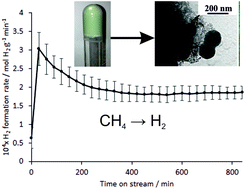
Dalton Trans., 2017,46, 8782-8787
https://doi.org/10.1039/C7DT00285H
Asymmetric charge separation and recombination in symmetrically functionalized σ–π hybrid oligosilanes
The flexibility of σ-conjugated silanes presents new opportunities for controlling charge transfer via changes in molecular conformation.
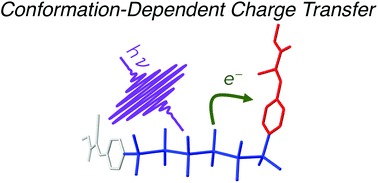
Dalton Trans., 2017,46, 8716-8726
https://doi.org/10.1039/C7DT00384F
Reaction of the thermo-labile triazenide Na[tBu3SiNNNSiMe3] with CO2: formation of the imido carbonate (tBu3SiO)(Me3SiO)C![[double bond, length as m-dash]](https://www.rsc.org/images/entities/char_e001.gif) N-SitBu3 and carbamine acid (tBu3SiO)CONH2
N-SitBu3 and carbamine acid (tBu3SiO)CONH2
A one-pot synthesis of (tBu3SiO)(Me3SiO)C![[double bond, length as m-dash]](https://www.rsc.org/images/entities/char_e001.gif) N-SitBu3 and (tBu3SiO)CONH2 was achieved by the reaction of Na[SitBu3] with Me3SiN3 and subsequent CO2 treatment.
N-SitBu3 and (tBu3SiO)CONH2 was achieved by the reaction of Na[SitBu3] with Me3SiN3 and subsequent CO2 treatment.
![Graphical abstract: Reaction of the thermo-labile triazenide Na[tBu3SiNNNSiMe3] with CO2: formation of the imido carbonate (tBu3SiO)(Me3SiO)C [[double bond, length as m-dash]] N-SitBu3 and carbamine acid (tBu3SiO)CONH2](/en/Image/Get?imageInfo.ImageType=GA&imageInfo.ImageIdentifier.ManuscriptID=C7DT00173H&imageInfo.ImageIdentifier.Year=2017)
Dalton Trans., 2017,46, 8769-8773
https://doi.org/10.1039/C7DT00173H
Optical spectra, electronic structure and aromaticity of benzannulated N-heterocyclic carbene and its analogues of the type C6H4(NR)2E: (E = Si, Ge, Sn, Pb)
Aromaticity of carbene analogues of the type C6H4(NR)2E: (E = C–Pb) has been established by Raman, UV-vis, ISE, NICS and ACID methods.
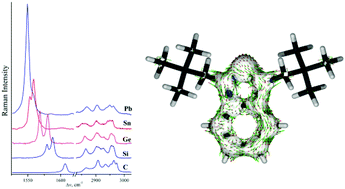
Dalton Trans., 2017,46, 8774-8781
https://doi.org/10.1039/C7DT00356K
Diastereoselective silylene transfer reactions to chiral enantiopure alkenes: effects of ligand size and substrate bias
When silylene transfer reactions are irreversible, the steric hinderance of the alkene and ligands on the metal catalyst does not influence stereoselectivity, but when the reaction is reversible (above), silyene transfer reactions can be diastereoselective.
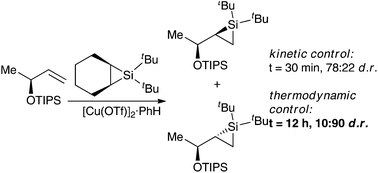
Dalton Trans., 2017,46, 8763-8768
https://doi.org/10.1039/C6DT04612F
Controlled synthesis of cyclosiloxanes by NHC-catalyzed hydrolytic oxidation of dihydrosilanes
Hydrolytic oxidation of dihydrosilanes with water in acetonitrile with 0.1 mol% of NHC produced hydrogen gas and cyclosiloxanes in excellent yields.

Dalton Trans., 2017,46, 8746-8750
https://doi.org/10.1039/C6DT04882J
Syntheses of transition metal methoxysiloxides
The paper describes three methods for the preparation of methoxysiloxide complexes, a rare class of complexes of relevance to room temperature vulcanization (RTV) of polysiloxanes.
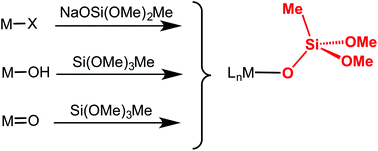
Dalton Trans., 2017,46, 8756-8762
https://doi.org/10.1039/C6DT04205H
Gold nanoparticles stabilized by cationic carbosilane dendrons: synthesis and biological properties
Water soluble gold nanoparticles have been isolated with pendant cationic carbosilane dendrons and their biological properties have been evaluated.
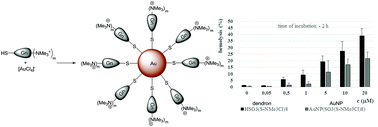
Dalton Trans., 2017,46, 8736-8745
https://doi.org/10.1039/C6DT03791G
A structural study of alkaline earth metal complexes with hybrid disila-crown ethers
A series of disila-crown ether complexes have been characterized by single crystal X-ray diffraction. The complex stability of different systems were studied by DFT calculations and proton NMR experiments.
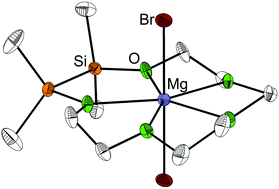
Dalton Trans., 2017,46, 8727-8735
https://doi.org/10.1039/C6DT04018G
Neutral six-coordinate bis(dithiocarbamato)silicon(IV) complexes with an SiCl2S4 skeleton
The first six-coordinate bis(dithiocarbamato)silicon(IV) complexes, compounds 3 and 4 with their unprecedented SiCl2S4 skeleton, were synthesised and structurally characterised.
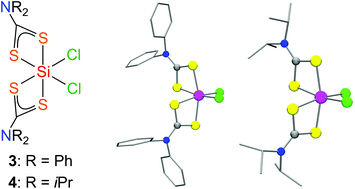
Dalton Trans., 2017,46, 8751-8755
https://doi.org/10.1039/C6DT03264H
About this collection
The chemistry of silicon continues to have wide-ranging impact in diverse arenas of science and technology, including medicine, materials, energy, and catalysis. Discoveries in fundamental aspects of silicon chemistry continue to contribute to long-standing applications such as those derived from silicon-based semiconductors, and promise to enable new technological advances. The goal of this issue is to showcase the diverse fundamental and applied science associated with silicon, and Dalton Transactions is an excellent venue to illustrate how these efforts are global in nature.